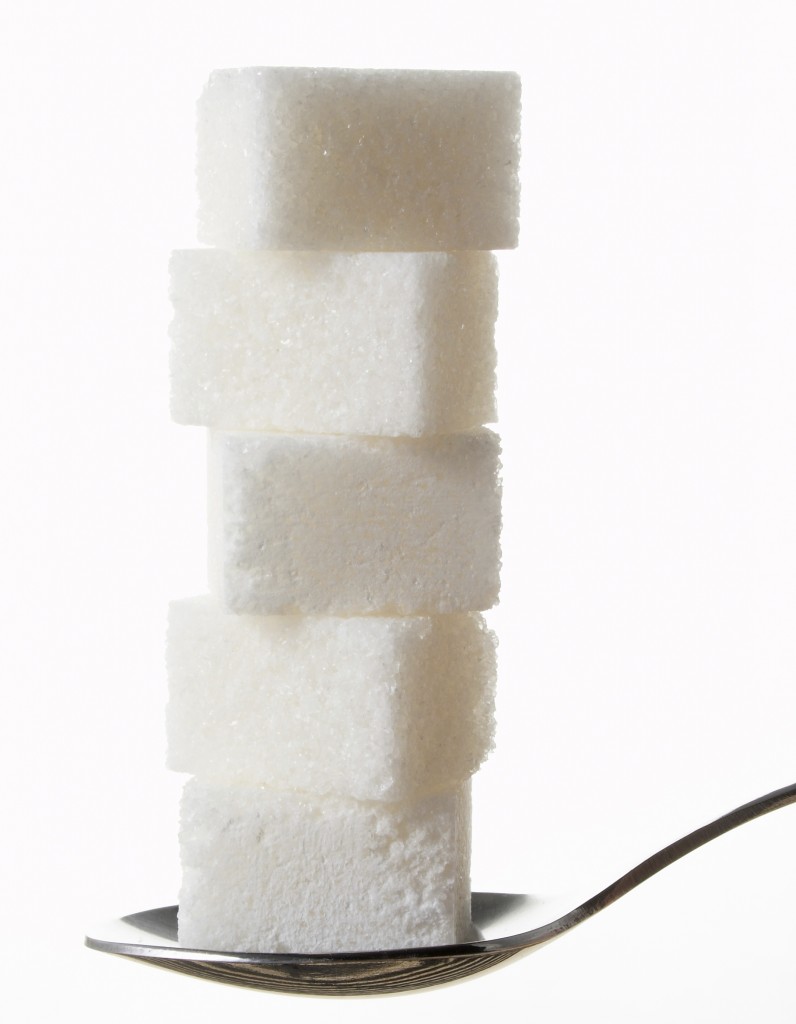The story on sugar hasn’t been so sweet lately. About a week ago there was a flurry of publicity over a study published recently in the Journal of the American Medical Association that linked sugar to heart disease. Given that February is American Heart Month, now seems a good time to look at the connection between added sugars and heart disease. Let’s get past the news-hour sound bite, however, and examine what the report actually showed, and what it might mean for your diet and health.

What did the study show?
The JAMA study looked at the sugar consumption habits of about 43,000 Americans, as reflected in data collected from an ongoing national nutrition and health study. The purpose? To see if added sugar consumption over time (as a percent of daily calories) was associated with cardiovascular mortality. This study did not include natural sugar, such as that in fruit. According to the study, those participants who obtained 17-21% of their daily calorie intake from added sugar had a 38% higher risk of dying from heart disease compared to those who consumed just 8% of their daily calories from added sugar.
Interestingly, the researchers showed that the risk of cardiovascular death became elevated once added sugar intake surpassed 15% of daily calories. How much is that, approximately? Well, if you consume a 2,000 calories per day diet, that amount is equivalent to drinking one 20-ounce soda. What the study showed was an association, a correlation or a link between increasing sugar consumption and risk of death from heart disease. It did not show that the sugar content of the diet caused the increased risk. Is this just quibbling over terminology? Not really. This type of study is observational—not experimental. Observational research never shows cause-and-effect.
How much added sugar are we getting?
Most Americans exceed the expert recommendations for added sugar intake. The World Health Organization recommends that we get fewer than 10% of our daily calories from added sugars. The American Heart Association advises women to get no more than 6 teaspoons of added sugar per day (that’s around 100 calories); for men it’s 9 teaspoons (or about 150 calories). Most of us get more than this.
According to the Centers for Disease Control (CDC), adults in the US get approximately 13% of their total calories from added sugars (as of 2010). Men consume a larger total amount of added sugars, but not more than women in terms of percentage of total caloric intake. Interestingly, for adults, one-third of the added sugar came from beverages and the rest was from food. For children and teens, beverages accounted for 40% of added sugar calories.
What’s the problem with too much sugar?
Consuming too much added sugar can be detrimental to your health in several ways.
- Too many added sugar foods and beverages can lead to too many calories, which can contribute to weight gain.
- Lots of foods and beverages with high amounts of added sugars provide few nutrients. These are sometimes called “empty calorie” foods. Eating too many empty calorie foods displaces more nutritious food choices, short-changing you in the nutrition department.
- Sugar on the teeth promotes bacteria growth that can lead to increased tooth decay and cavities.
- Finally, even though the recent study did not prove that added sugar causes increased death from heart disease, there is another link between sugar and heart disease. Excess sugar in the diet also increases the level of triglycerides in the blood, and high triglycerides may increase heart disease risk.
How can we cut back on added sugar?
- Switch your regular soda to diet soda—or better yet, water or seltzer (if you want bubbles).
- Bake your own treats. Chances are, if you have to make your own cookies, cakes, pastries and granola bars, you’ll eat substantially less of them. Plus, at home you control how much and which sweeteners you use. Check out these easy ways to swap fruit for some of the sugar when baking.
- Find a lower-sugar breakfast cereal you like (Guiding Stars shelf tags can help you choose a healthful cereal—shoot for 2- and 3-star cereals), then add only as much sugar as you “need”—in many cases you will add far less than the amount used in sugary cereal varieties.
Want to learn more? Watch the recording of our free webinar, The Added Sugar Debate »